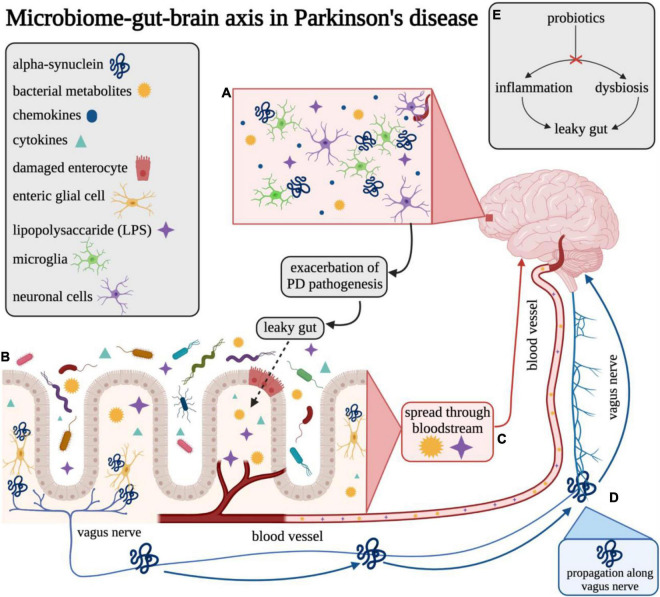FIGURE 1.
Overview of the gut–brain axis in Parkinson’s disease. Visual overview of the proposed microbiome–gut–brain axis in Parkinson’s disease. (A) LPS and other bacterial metabolites may be able to enter the brain across the blood–brain barrier (BBB) and may elicit release of various chemokines/cytokines that promote an inflammatory response in Parkinson’s disease. (B) Microbes in the gut lumen can promote inflammatory pathways and cause damage to enterocytes which may lead to compromised gut epithelial barrier integrity (“leaky gut”). (C) Bacterial metabolites, such as LPS, can translocate from the gut lumen to the bloodstream across the compromised gut barrier and cause possible systemic and neuroinflammation in the brain. (D) Misfolded α-synuclein may be induced by microbes at the intersection of the gut lumen and ENS and may be propagated to neurons in the brain through the vagus nerve. (E) Probiotic interventions are thought to reverse dysbiosis through altering the composition of the microbiome. This change is also purported to result in reduction of inflammation and improvement of gut epithelial barrier integrity, thereby preventing or reducing microbial translocation. This figure was created with BioRender.com.

